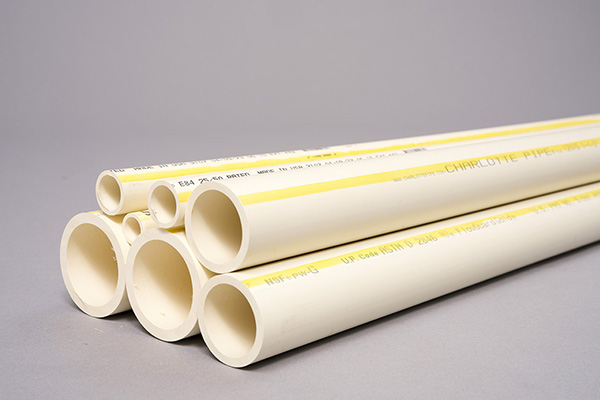What Homeowners Should Know About CPVC when they see it on a home inspection report. CPVC, or chlorinated polyvinyl chloride, is a type of plastic-like pipe used in some homes as a plumbing supply pipe. It is usually found in parts of Santa Clarita. When I was a young inspector, I was talking to another inspector who told me I should call out CPVC as a bad material. But when doing online research, I could not find any evidence of CPVC being a problem, outside of a lawsuit in Florida about the glue, but not the pipe itself. But I never found an article linking this material to failure in California. Rather, I found CPVC is specially mentioned and is an approved material in the California plumbing code.
💧 What is CPVC?
CPVC is a thermoplastic pipe used for both hot and cold water lines. It’s more temperature-resistant than standard PVC and doesn’t corrode like galvanized steel. Whereas regular PVC is only approved for cold water and not rated for hot water, CPVC is approved for both hot and cold water. It is noticeable as it looks like normal white PVC but has a yellowish tint, or an off white appearance with a yellow line.

✅ Why CPVC is found in homes
CPVC is approved by the California Plumbing Code Section 604.1 as a water supply pipe. The same approval is also found in UPC (Uniform Plumbing Code) and IPC (International Plumbing Code) for hot and cold potable water systems. In short, it’s an approved pipe material just about everywhere. Unlike galvanized steel, chlorinated polyvinyl chloride does not corrode. Unlike copper, it does not require welding or soldering for installation, making it significantly easier to install. And unlike copper, there is no risk of it being stolen and resold.
🚩 What are the Risks?
While CPVC is an approved material, it does come with some risks as a plumbing choice:
-
Brittleness with age: CPVC can become more fragile after 20+ years, especially in hot or poorly ventilated areas like attics.
-
Glue joint failures: A few reports (mainly from Florida and Texas) cite failing joints, often tied to incompatible adhesives or sealants—not the pipe itself.
-
Rodent damage or breakage: Any plastic pipe can be vulnerable to pests or mechanical impact if not properly installed or supported.
But here’s the truth: CPVC is no more or less prone to failure than other materials—when installed correctly and in the right environment. Every plumbing material has some aspect of risk.
🛠 Should I Be Concerned If My House Has CPVC?
Not necessarily. Like any material, it has pros and cons. If the pipe looks intact, isn’t discolored, and shows no signs of leaking, there’s no reason to panic. However, if you’re seeing stress cracks, water damage at joints, or signs of previous repairs—then yes, it’s worth having a plumber evaluate.
Why don’t I see CPVC more often?
The next logical question is if CPVC is approved and has no downsides, why do we not see it in more homes? This is a good question. Copper is the tried and true most popular material for plumbing. Mostly, because it has name recognition as a popular material. Most people, even if they are not a plumber, understand the copper is a common pipe material The downside of copper is, as a mineral, it tends to go up and down in price over the years. When copper prices spike, builders look for alternative materials, and hence, CPVC gets used. But when copper prices fall, it comes back in popularity. Since 2009, PEX has become the alternative plumbing material of choice in Los Angeles. PEX is actually much easier and quicker to install than CPVC. PEX doesn’t require gluing and can easily go around corners.
Final Take
CPVC is not a defect just because it exists. It’s just a plumbing material—like PEX or copper—that has a history, some trade-offs, and a long list of homes where it still works just fine. Can it fail? Yes. But so can ANY plumbing material.
To book you home inspection call 88+298-3405 or book online here.

